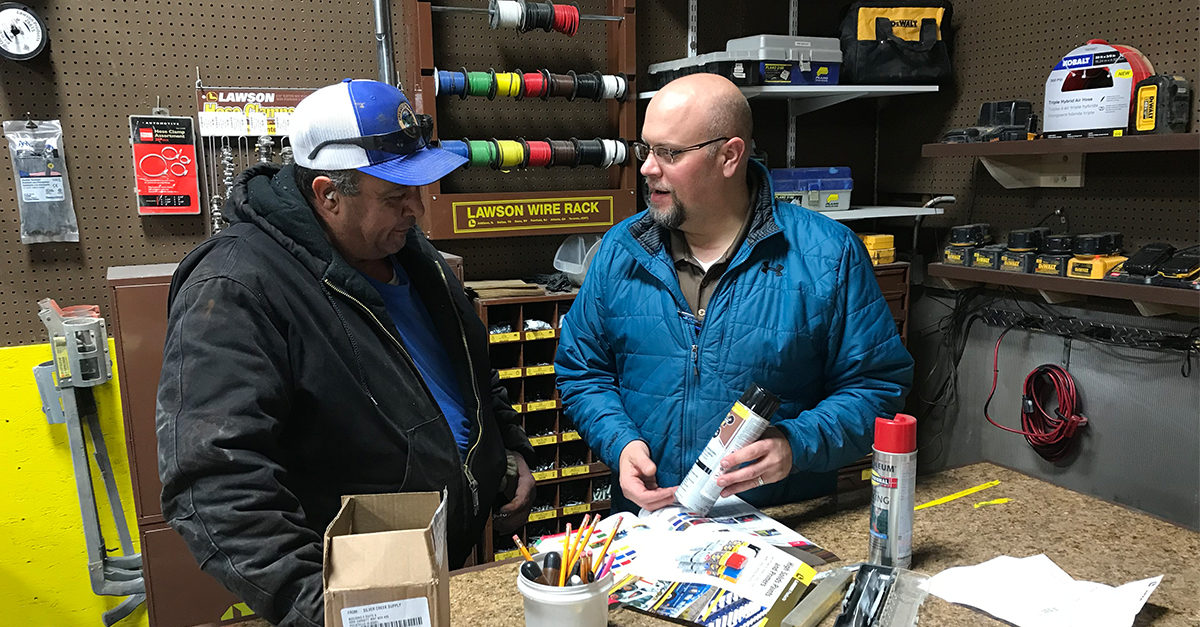Facility managers of schools, hospitals, and hotels of all sizes strive to maintain a building environment that is safe, healthy, and comfortable for employees and visitors. But in today’s competitive market, they are increasingly pressured to do more with less—in other words, to save the company money and increase revenue.
Facility managers are busy extending the life of aging equipment, keeping accurate service and maintenance records, responding to building emergencies, staying on top of regulatory and compliance standards, and implementing the right technology. How can they fit in minimizing downtime and controlling maintenance inventory costs?
One strategy is to take a closer look at the consumables used every day in building maintenance and repair. This includes items such as cleaners, drain openers, fasteners and hardware, pipe insulation, and personal hygiene and safety items. Giving extra attention to how you manage inventory of these items can have a big impact on a facility’s maintenance budget.
Here are five tips to help control your maintenance inventory costs and get your savings initiative underway:
1. Avoid out-of-stocks and overstocks
With thousands of products available to meet planned and unplanned fixes, maintaining the right inventory can be challenging. One way to increase productivity and reduce costs is through an optimized vendor-managed inventory program. This program takes the task of reordering depleted products from the customer and gives it to the supplier. A supplier representative can help you analyze your usage and purchasing habits for better forecasting, controls, and just-right inventory levels.
Done well, this means no more time spent taking inventory and reordering small parts, no more unplanned trips to off-site stores, and less project downtime. The products you need will be on hand and stocked according to your preferences and usage, preventing out-of-stocks and overstocks.
2. Choose the right products
Are you or your maintenance technicians choosing a product for its lower price point or for its superior performance? Lower-priced tools and components may break or wear down quicker and need to be replaced sooner. A durable, highly engineered product may actually have the lower overall cost in the end. It’s also important to work with suppliers that continually evaluate their products for dependability and durability to ensure top performance.
3. Increase product application knowledge
With hands-on training, your maintenance staff will be up to speed on best practices for safe and efficient use of the maintenance tools and parts you use most. Ask your supplier for training that is tailored to meet your specific needs, planned around your schedule, and hosted at your location so your employees are attending sessions when it’s convenient for you. Topics such as safety, water leak repair, electrical repair, new products, and new and available technologies can positively impact the overall efficiency of your team and safety of your building.
4. Request custom assortments
Ask that your supplier build custom assortments—prepackaged kits containing a selection of fasteners and hardware used frequently—that meet your common maintenance, repair, and operations scenarios. These kits will ensure you have what you need on hand with minimal expense.
5. Increase repair productivity
Reduce the time it takes to make building repairs by organizing your maintenance closet. Get rid of inadequate storage containers such as boxes, tin cans, and paper bags. Your supplier representative can install bins, storage cabinets, and other efficient setups that will improve your parts-retrieval process and create a more organized and functioning workflow. Durable product storage and dispensing equipment, easy-to-read product descriptions and sizes on labels, and backplates for convenient reordering and refilling will keep you organized and save you time searching for parts.
Assessing how you manage the consumables used in your maintenance and repair projects can help you better control your maintenance inventory costs and reduce equipment downtime. Quality products, proper training, good organization and a good working relationship with a supplier you trust can help save you time, increasing both the productivity of your team and the safety and overall image of your facility.




